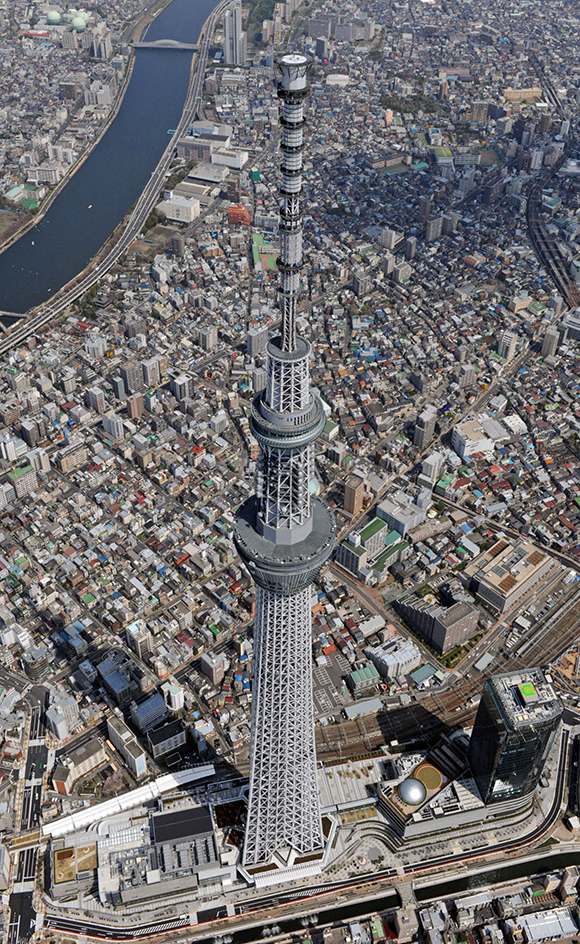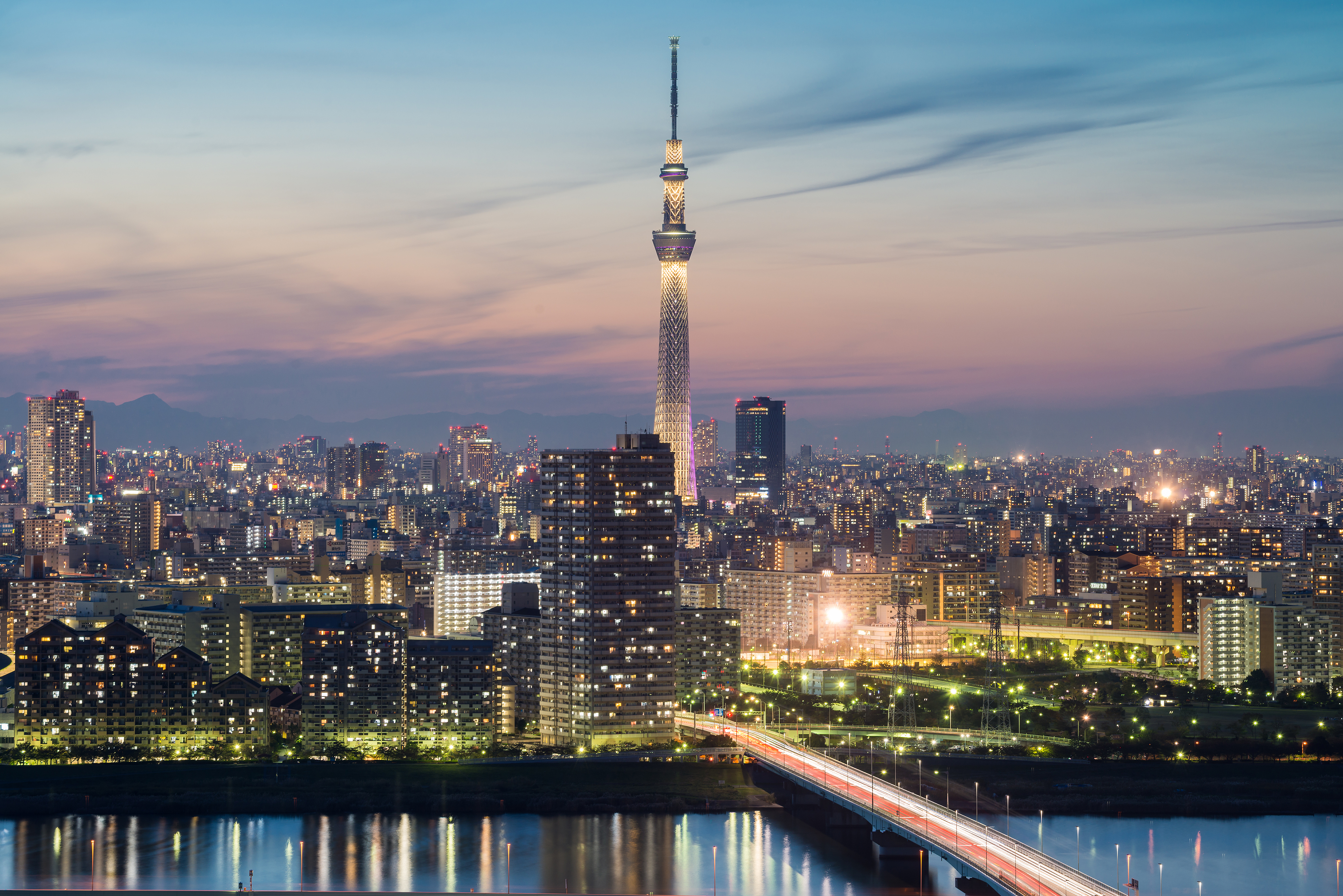Tokyo Skytree, a radio and television broadcasting tower in Tokyo, Japan, is the second tallest structure in the world. It is 2,080 feet (634 meters) tall. Only the Burj Khalifa skyscraper in Dubai is taller. Construction of the Tokyo Skytree cost $800 million. The tower was completed in 2012.

The Tokyo Skytree was originally planned to be 2,001 feet (610 meters) tall. The company for which it was built, Tobu Railway, decided to make the tower taller for purely symbolic reasons. In Japanese, the building’s height in meters, 634, reads as “mu-sa-shi.” Musashi is the name of the historical province occupied by modern-day Tokyo.
The Japanese architect Nikken Sekkei designed the Tokyo Skytree. The tower has a triangular form on the ground floors that transforms into a circular form as the structure rises. The Skytree is designed to withstand earthquakes, which are common in Japan. Its structure makes use of a steel tube frame wrapped around a core of reinforced concrete. The tower is painted white with a faint tint of blue, a color referred to as “Skytree white.”
In architectural terms, the term skyscraper often refers to a building mainly designed to be occupied by people. The Tokyo Skytree houses a restaurant and two observation decks, but most of the structure is uninhabitable. For this reason, it is referred to architecturally as a tower.

